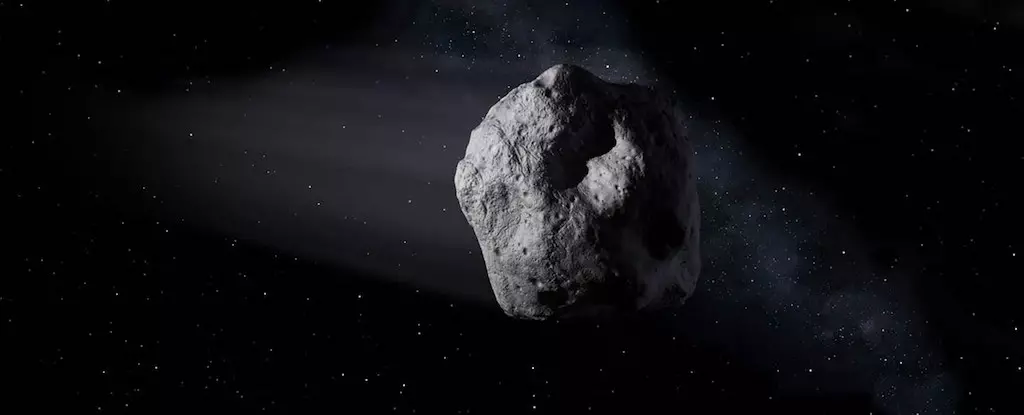Human curiosity about the cosmos often blurs the line between scientific rigor and sensational speculation. Whenever a new celestial object appears near Earth, especially those with peculiar orbits, there’s an immediate rush to interpret these phenomena through the lens of extraterrestrial intelligence. This instinctive leap, while exciting, often distracts from a grounded understanding of orbital mechanics and natural asteroid populations. The case of 1991 VG exemplifies this tendency. When first discovered, its Earth-like orbit led some to imagine it as an alien probe—an intriguing story but ultimately a misconception. This pattern underscores a broader human tendency to anthropomorphize celestial objects, projecting our fears and fantasies onto the natural behaviors of the universe. Recognizing this bias is essential if science is to progress beyond sensationalism and towards genuine discovery.
The Arjuna Asteroids: Earth’s Quasi-Satellite Family
Contrary to the initial fears surrounding objects like 1991 VG, recent research reveals a more mundane, yet equally fascinating, reality: the existence of a specific class of asteroids known as Arjuna. These are not alien probes or space guests brought here by unknown forces but are instead a group of Near-Earth Objects (NEOs) sharing similar, Earth-like orbital characteristics. Over a hundred such objects occupy what is referred to as the “Arjuna secondary asteroid belt,” located within the broader neighborhood of Earth’s vicinity. Their significance partly lies in their quasi-satellite status—not gravitationally bound like moons but in resonant orbits that keep them in close, predictable proximity to Earth for extended periods.
Their kinship to each other offers a window into the dynamic dance of celestial mechanics. Rather than being exotic interstellar vessel remnants or alien messengers, Arjunas exemplify natural orbital resonances that occur due to the complex gravitational perturbations within our solar system. A recent discovery, the asteroid 2025 PN7, adds to this growing family. Its brief residence as a quasi-satellite, lasting roughly 128 years, underlines the transient nature of these celestial relationships and reflects the ongoing dynamism of Earth’s immediate cosmic environment.
Temporary Captures: Mini-Moons and Orbital Resonances
One of the most captivating aspects of Arjuna asteroids is their capacity for temporary gravitational captures, which sometimes transform them into “mini-Moons.” This fleeting gravitational bond, unlike permanent moons that orbit Earth indefinitely, showcases the delicate balance of orbital forces at play. For instance, asteroid 2024 PT5 briefly became a mini-moon, temporarily captured by Earth’s gravity and presenting a minor impact threat—this process exemplifies the thin gravitational line that separates close pass-bys from true moons.
This phenomenon emphasizes that Earth’s neighborhood is more dynamic than static. These objects can come and go, sometimes lingering long enough to be observed closely, other times just passing through. Such orbital behavior highlights the importance of understanding near-Earth objects not solely as potential hazards but as natural parts of the system. Their transient nature serves as a reminder that Earth’s environment is constantly reshaped by gravitational interactions, and that objects we regard as mere space debris or asteroids become part of our planetary neighborhood, albeit temporarily.
Reframing Our Perspective on Space Objects
The narrative surrounding asteroids like 1991 VG and 2025 PN7 challenges us to rethink our approach to celestial discoveries. Instead of jumping to sensationalist conclusions about alien origins or interstellar visitors, scientists advocate for a measured appreciation of natural celestial dynamics. The classification of these objects as quasi-satellites and their inclusion in the broader Apollo group inform us about the variety of paths and behaviors that asteroids can undertake.
Moreover, the distinction between quasi-satellites and true moons—highlighted in expert studies—is crucial. Quasi-satellites are in resonant orbits, maintaining proximity without gravitationally binding them to Earth, whereas mini-moons are temporarily captured, showing a different gravitational relationship. Recognizing these differences empowers scientists and enthusiasts alike to appreciate the intricate gravitational choreography that governs our cosmic environment.
As research progresses, the discovery of new quasi-satellites deepens our understanding of the solar system’s dynamism. It also grounds the public narrative, steering it away from misconceptions and fostering a sense of wonder rooted in scientific fact. The case of 2025 PN7 is a testament to how natural orbital mechanics can mimic some perceived hallmarks of alien activity, but ultimately reaffirm the universe’s breathtaking complexity and order.
—
Note: This article aims to challenge misconceptions, emphasizing the importance of scientific literacy in space exploration and the rich, dynamic behavior of near-Earth objects.

